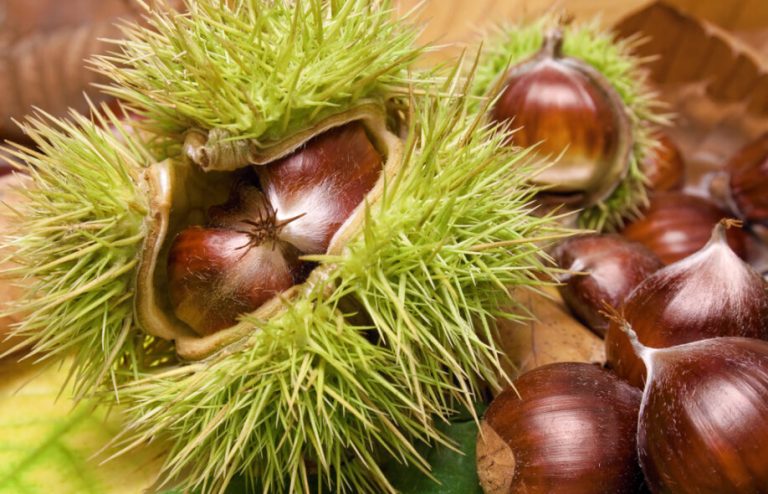Some chestnuts are edible, others are poisonous to humans. Here we show the differences between horse chestnuts, sweet chestnuts and chestnuts.
Horse chestnuts, sweet chestnuts, chestnuts – which ones are edible?

When the brown leaves fall from the trees in autumn, the chestnuts also fall to the ground. In Germany, there are almost exclusively two different types of chestnuts found in nature: the horse chestnut and the sweet chestnut.
Most people know the fruit of the sweet chestnut as chestnuts or chestnuts. They are considered a delicacy and are in great demand in autumn. At many events and in big cities there are chestnut stands where you can get fresh hot chestnuts. The chestnut variety is edible, whereas horse chestnuts are poisonous.
Horse chestnuts are not edible: this is how you distinguish them from chestnuts
Horse chestnuts are much more common than sweet chestnuts with edible chestnuts. You can easily tell the two types apart:
The leaves of the horse chestnut consist of five smaller individual leaves that look similar to beech leaves.
The leaves of the sweet chestnut, on the other hand, do not have five leaves, but hang individually on the branches. They also have small, sharp spines on the edge.
Edible chestnuts (marrons) look different: They taper to one side and have a brush-like puff at the top.
The shape of the chestnuts is rather flat and pointed, the shape of the horse chestnuts is more round.
The husk of the horse chestnut has hard, short spines. There are many longer spines on the chestnut shell.
Horse chestnuts flower from April to May and lose leaves and fruit in September and October. Eating horse chestnuts is poisonous to humans, but children like to make small chestnut figures out of them. It’s not dangerous as long as the children don’t swallow the chestnuts. More about this here: Handicrafts with chestnuts: Instructions for chestnut men and Co. You can also make detergent from horse chestnuts or a horse chestnut ointment.
Tip: For many animals, chestnuts are not only harmless, they are actually a real treat. Wild boar and deer like the chestnuts very much. At foresters or in a game reserve there are often collection containers to which you can bring the collected chestnuts for the animals.
Edible chestnuts: Eat them raw, cooked or baked?

The sweet chestnut flowers in June and July, a little later than the horse chestnut. The chestnuts also fall a little later from the tree – it won’t be until the end of September at the earliest. When the chestnuts are ripe, the prickly skin bursts open and wilts. Shortly thereafter, they fall to the ground. Up to three edible chestnuts can sit in a chestnut shell. You can eat them raw, boiled and also baked:
In the case of raw chestnuts, you must first remove the peel.
If you cook or bake chestnuts, you must first slit them crosswise. Then the heat can penetrate the chestnuts and cook them. The chestnuts are only peeled after cooking/baking.
The edible chestnuts are very high in calories, but also healthy: They contain a lot of high-quality protein and significantly less fat than nuts. Potassium, calcium, iron, magnesium, as well as vitamin E, vitamin C, almost all B vitamins and beta-carotene are also found in large quantities in the chestnuts.
You can find the sweet chestnut in many parks and deciduous forests. If you look around carefully during walks, you can spot them.

